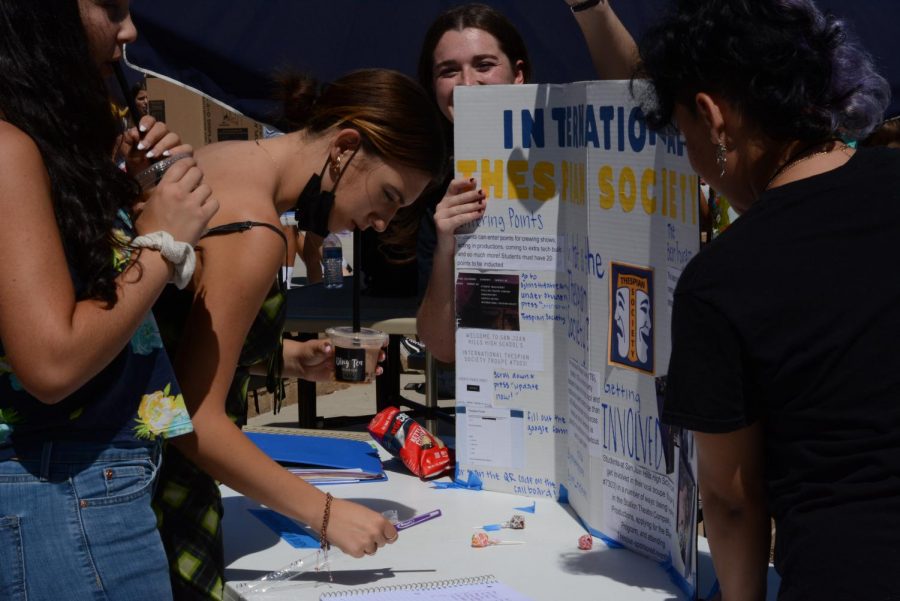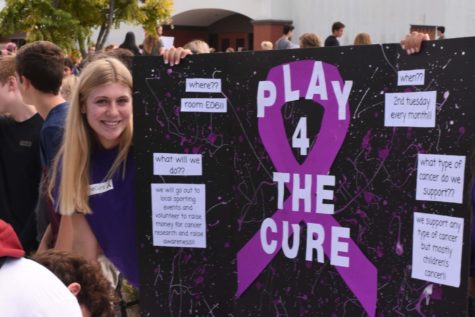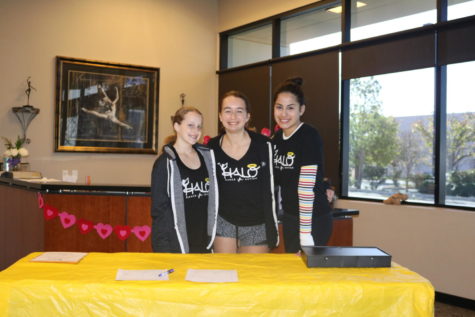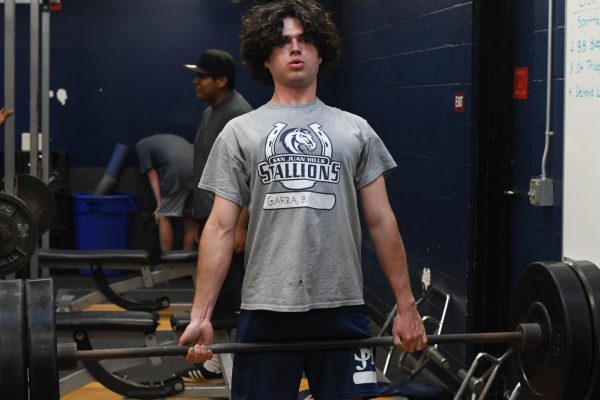The Over-Saturation of Clubs On Campus
Is having 100+ clubs something to brag about?
Thespian Club Sign-Up: A student signs up for the International Thespian Society (ITS), a club dedicated to the theatre program. Clubs such as the ITS appeal to students who want to have further involvement in school activities through community work and group organizations.
There are exactly 116 clubs at our school– around 1 club per every 25 students enrolled. With such a large number of clubs, the variation of these clubs is still somewhat limited.
37 of these clubs fit under the category of a charity organization. Many of them do not aspire to any specific goal or serve any specific purpose. For a lot of them, their descriptions just state that they give students “community service hours” and advertise to students that “you can gain volunteer experience” without including any further detail. Even clubs with specific purposes that are tied to organizations often describe their objectives simply as “fundraising.” For interested students, the details of what they are actually going to do in such clubs seem very unclear.
Along with this, we have 5 clubs dedicated to some sector of the Christian faith, 14 clubs centered around political issues, ideas, or discussions, and even two distinct “car appreciation” clubs.
Naturally, the vast number of such clubs have left students questioning their validity. One of the major doubts students hold against clubs and their presidents is that they are motivated solely by the idea that starting a club looks good on college resumes. Majority of SJHHS students, especially upperclassmen, are hesitant to join them, fearing that they would be signing up for a club that someone has started only to pad their college resumes, and that the club will not really accomplish anything productive.
Realistically, a lot of clubs realize these fears. During Club Rush, one of the many clubs on display had its president marketing to other students, telling them all they had to do was to just write their name and phone number down. “You don’t have to show up for the meetings”, the president said. “I just need this for my college applications.”
What a lot of these types of club presidents fail to recognize is that colleges do not value their actions as much as common belief would have them think. In a school with 100 clubs, starting a club does not look all that great on college applications.
The hard truth is this: starting a club is something that anyone can do with minimal effort. Colleges can see through people who start clubs only to boost their college admissions chances. If students want to stand out on their college applications, they should spend their time on something more unique and true to themselves. They should do what they enjoy, not what they believe they are expected to do– colleges will see and appreciate that more than a superficial club.
At the same time, however, SJHHS has plenty of clubs that are extremely productive and worthwhile. These clubs hold frequent meetings, engage their members, and accomplish goals within the campus. However, with all these “for show” clubs in the mix, how are students to know which clubs they will actually enjoy, and which are a waste of time?
There are a couple strategies students can use when deciding which club meetings to attend– and which to continue to attend. First, student word of mouth is a big factor in allowing students to understand which clubs their peers are actually enjoying and gaining things from. When a friend mentions a club that they enjoy or continually attends its lunch meetings, that is a signal to their peers that they are a member of a worthwhile club.
Another sign that a club is productive is how long it has been on campus. If alumni cared enough about their club to elect people to pass it down to and if their members were interested enough and passionate enough about the club to take it on, that club is surely doing something that students are excited by. While the age of a club is not a sure sign of its value to a student, it is a positive sign.
Along with this, the most effective strategy a student can use when deciding if a club is worth their time is simply through trial and error. Many students, especially underclassmen, signed up for more clubs than they could reasonably attend in this year’s Club Rush. After attending a few meetings of each club and hearing what their presidents have to say, a student should be able to use their own judgement to determine what clubs they will stick with and find value in for the rest of the year.
While it is disheartening that there is such a large number of meaningless clubs at our school that there is a need for students to utilize such strategies when joining clubs, the toxicity of the college admissions process is largely to blame, not the club presidents themselves.
The system of starting clubs at our school is often exploited and undermined, but there is much about SJHHS clubs to be celebrated. For every “college” club started at our school, there is a genuine club that is meeting the needs of SJHHS students and is adding diversity to our school.
“I like clubs because I get to incorporate my outside interests in a school environment, and I can reach a larger group of people,” said senior Abby Villafana.
While our system of clubs and presidencies at this school is flawed, they are leaving a positive impact on our school.
Besides, even if every other club at our school was simply for show, the Extreme Bingo Club does sound pretty interesting.
Your donation will support the student journalists of San Juan Hills High School. Your contribution will allow us to cover our annual website hosting costs.

Anna Ho is a senior and is in her first year on The Express as both Clubs and Captions editor. When not studying, she likes to spend time out with her...











